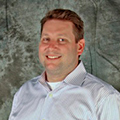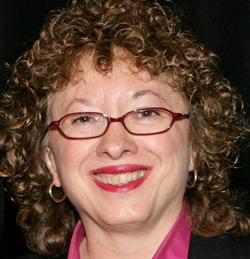When John Quarmley and his partner Jim Morton saw the synthetic wood produced by the British company, Highwood Consultants Ltd., they recognized a winner.
In 2003 they began by importing the product; soon they were the exclusive U.S. manufacturers of the advanced extruded plastics used for fencing, decks, docks, outdoor furniture, spa cabinets, walkways and railings.
A graduate of Lehigh University with a degree in chemical engineering, Quarmley, 51 and a Kutztown resident, co-founded Principia Partners, a marketing and consulting company now located in Malvern, in 1995; from this company grew Highwood USA.
Thanks to its products’ good looks and durability, Highwood USA has grown into a $15 million company.
What inspired you to start Highwood USA?
At the time I was working for Principia Partners, (which did marketing and consulting for the plastics industry and the building products industry). Around 1995, there was the happy coincidence of the development of the decking industry. . . This was both plastic material and a building product, so it really fit our wheelhouse pretty well. So we developed a good practice in the whole area of wood composites.
In 2001, Principia was invited, and I was nominated, to give a talk at a building materials conference in Bordeaux, France. I gave a presentation on the current state of affairs in the wood-composite decking market . . . One of the directors of Highwood in Europe (Highwood Consultants Ltd.) was at the conference. I didn’t meet him there, but I got an e-mail from him a week later saying, “We have been trying to get into the North American market for 10 years and we haven’t had any success. Can you help?” So when we started this whole thing, it really was on the basis of Principia doing the consulting, putting together a marketing program for Highwood UK to get into the U.S.
In early 2002, Jim Morton (who also worked for Principia) and I went over and reviewed the process, the product, and what they had done. Knowing what was available in the U.S.. . .Jim and I were so impressed with the product that . . . The next day, we went to Highwood UK and said, “Guys, we want to own this. We don’t just want to do a project.” So instead of leaving there with a consulting assignment, we left with an option. We wrote up an agreement that said we had six months to start this company. . . and then we’ll have exclusive rights to this technology in America.
In the fall of 2002, we went back over and worked out a distribution agreement; we said we’ll import and distribute.
In March 2003, Highwood USA officially became an entity. We really started marketing in earnest in March when we hired an employee to handle business development/sales. . . Within about three months we were sitting down with some investors because by early May we had basically sold out the capacity of the plant in England.
How did you get from doing importing and distribution to becoming a manufacturer?
It was very quickly apparent to us that if we were going to keep this thing going we needed to invest and build a plant. We didn’t have the money to do that, so we put together a prospectus and we met with the family who owns Kinsley Construction in York; for them to write a check for $4 million was no big deal.
In February 2004, we had investors on board. . . In October we found the building we’re in now; it was built on speculation by the Tamaqua Industrial Development Enterprise to encourage a company to come and bring jobs to the area.
We ordered the equipment, and we . . . hired our first 7 or 8 employees in November 2003, and shipped them off to England to work in that plant, so they could learn the process and the materials.. . In February 2004 we got our first shipment of equipment in from Europe, and we made our first pound of product.
From 2004 to 2008 it was constant tweaking and constant learning to get the process to work the way we needed it to work.
How has the business grown since it started?
We had two production lines at the beginning; by the end of the year we had five production lines. By 2006 we had nine production lines. Now we have 22 production lines.
The building was originally 27,000 square feet; we have added 45,000 square feet of manufacturing and office space. We put in a big solar farm in 2010, which went live in 2011. This provides 25 percent of the power for our plant.
We have about 65 employees now, and an annual revenue just over $15 million.
What resources did you take advantage of to grow the business?
When we started, the building we got is in a KOZ (Keystone Opportunity Zone), so we got eight years of no property tax, no sales tax. We got a Governor’s Action Team grant of $80,000 for training. We took a loan from the MELF (Machinery and Equipment Loan Fund) early on to buy expansion equipment in 2004, which we just paid off.
In the summer of 2004, the Northeastern Pennsylvania Ben Franklin Technology Partners funded a summer intern for us, a mechanical engineering student from Lafayette University, to do work in the plant to develop a work plan and various procedures. When Jeremy was going back to school . . . we hired an engineer who is now our engineering director, leading our lean efforts.
The Manufacturers Resource Center at Lehigh University has been fantastic—their training and workshops on lean strategy are the best around.
What are some of the advantages of your location?
We’re only 3½ miles from Route 81, a major north-south route; we’re about 18 miles from Route 80, another major route. The park itself is physically very well laid out; it’s a nice, clean industrial park that TIDE manages here.
The other key thing is the labor pool. Right in our general area there’s quite a few plastics processors, so there’s people who know plastics and have some plastics processing experience.
What’s the big differentiator for your company?
I define our industry as the synthetic wood industry, so we compete with wood composites, plastic lumber and, to some extent, cellular vinyl, all of which are similar to ours.
There’s not a single product out there that has both the aesthetics and the mechanical and weathering performance that we have. There are products that have the aesthetics but can’t handle the outdoor environment. There are a lot of products that can handle the outdoor environment but aren’t as pretty as ours. Our product really looks like wood.
What’s next for Highwood USA?
We just completed our new five-year plan, with six key goals:
• to triple the size of this company.
• to maintain a profitability that generates an acceptable return for our investors.
• to be self-funded; we’re not going to borrow additional money to fund our growth.
• to be the employer of choice, and reduce employee turnover from the current 3.3 percent to less than 1 percent.
• to be a lean company.
• to be seen as the market innovator.
We’re working on some cool new furniture, which is the fastest-growing part of our business right now. And we’re working on a wainscoting product . . . that fits where you want looks and durability, in high-moisture areas like basements.
— by Susan L. Peña


http://www.highwood-usa.com/
87 Tide Rd. Tamaqua, PA 18252


